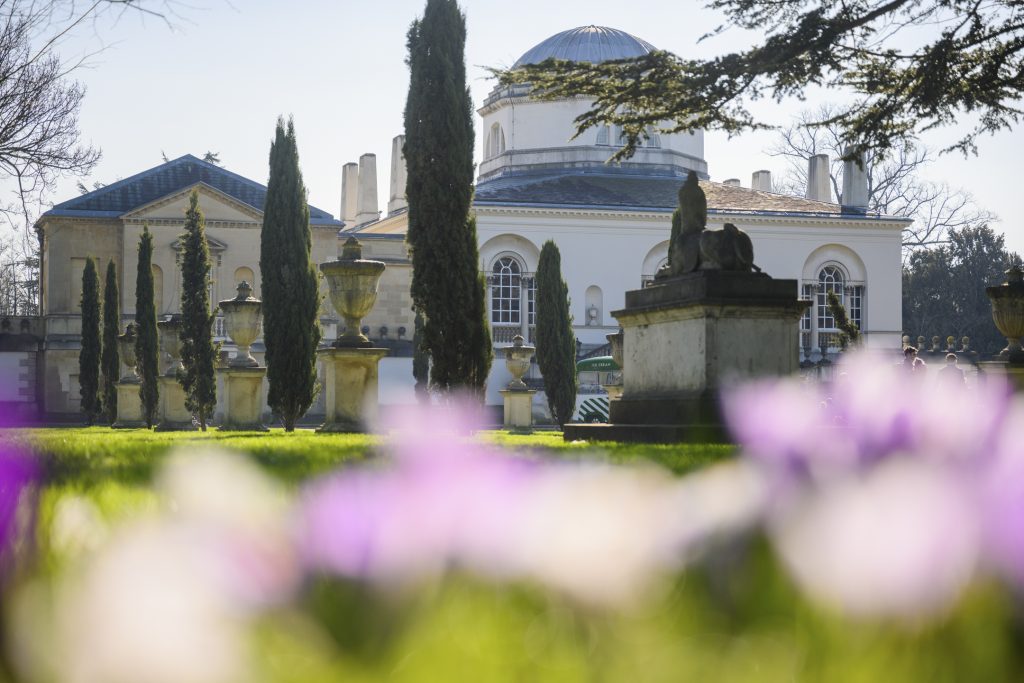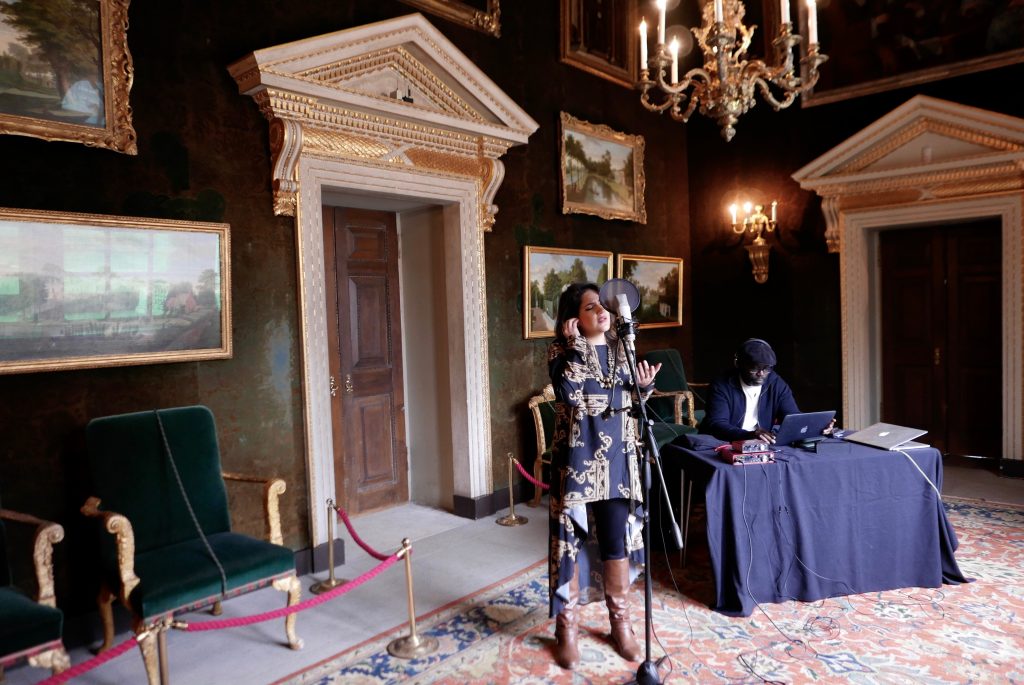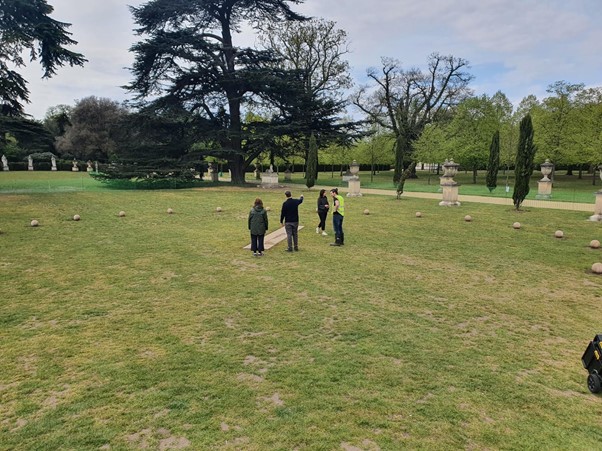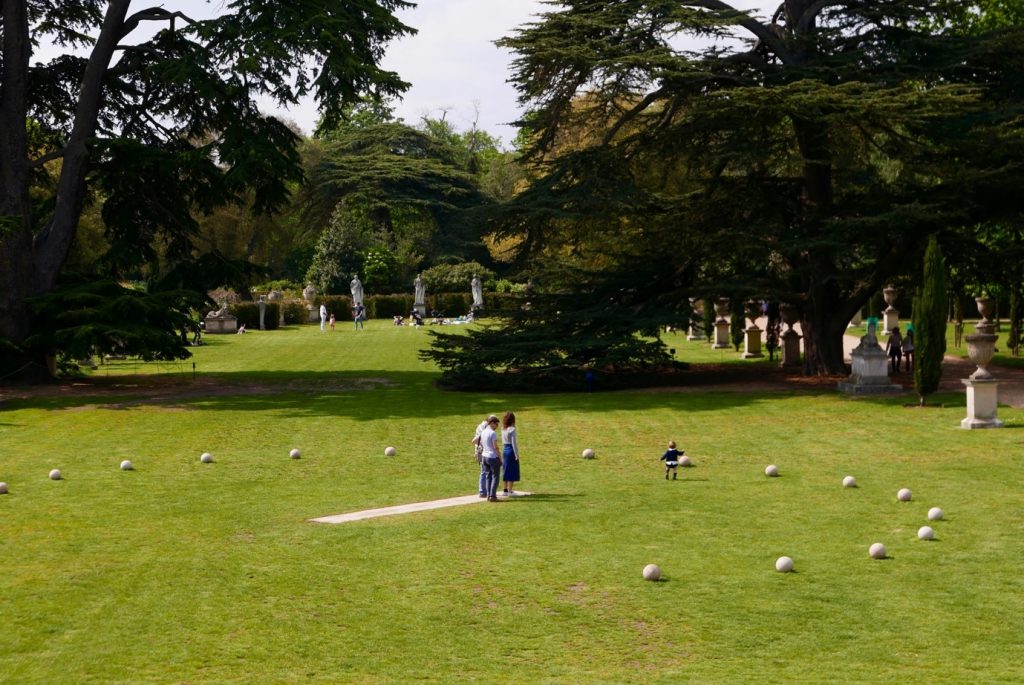Behind the Scenes: What Does it Take To Create Public Art?
Our new exhibition Bring Into Being is now open, with pieces in both the House and Gardens. In this article Tony Kidby of Links Signs explores the origins of the exhibition, and explains the ways Links Signs have contributed to the process.
‘Many of us only experience public art in its final stage – completed and admired by onlookers. But the process of bringing a concept to fruition is often fascinating in itself, representing an intersection of creative, philosophical and pragmatic considerations.
Chiswick House and Garden’s new artistic programme Bring Into Being is the culmination of many months of work and collaboration. It has been designed to transform this heritage site into a cultural hotspot, supporting diverse forms of creative practices.

Creating the Concept
Public art is its own specific genre, and over the years it has grown from static, sculptural interventions in public locations to works that involve communities and collaboration. Visually and physically accessible, public art can embody concepts that are shared or universal, and works are often informed by the landscape or buildings around them (whether that’s in conscious juxtaposition or in harmony).
The context from which the exhibition Bring Into Being emerged has many layers encompassing factors such as the historic nature of Chiswick House and Gardens, and the role this publicly accessible site can play as we navigate a global pandemic, climate emergency and amplified calls for social justice.

Selecting the Artists
Curator Mariam Zulfiqar explains: “Curators all work in their own ways, but artistic practice is central and from there the curatorial premise of the exhibition develops. Commissioning new work is different to exhibiting existing artworks. It requires different skills and often a different kind of communication where the curator is able to speak with the artist, fabricators and site owners to ensure the project can materialise.”
Links Signs and Mariam Zulfiqar have worked together previously. We have fabricated and installed exhibitions with her at the National Theatre, King’s College London, and worked together on numerous projects for Art on the Underground including stations along the Metropolitan Line and Gloucester Road Underground station. In 2013, we marked the 150th anniversary of the Tube by fabricating and installing Labyrinth by Mark Wallinger, a permanent artwork for 270 stations on the Tube network. It was great to be able to work with Mark once again as he, Jaimini Patel and Peter Adjaye were all invited to create new artworks for Bring into Being.
Funding and Collaboration
Art has formed part of public landscapes for millennia (and indeed our towns and cities are punctuated by centuries of statues), but it was after the Second World War that the idea of art as force for public good truly solidified. Behind the majority of public art projects is a base of financial support from local authorities, government funds, private individuals and corporate sponsors – not to mention donations of time from volunteers.
Everyone involved in the project, including the artists, curators, craftspeople, fabricators, installation teams and site stakeholders, need to work together, paying great attention to detail in every aspect of the project. This includes understanding the landscape or setting of the artwork, fully conceptualising how the piece will look once it’s in place, and applying the technical knowledge required to realise the artist’s ambitions in a practical format.

We might imagine artists working in silos, with all practical considerations taken care of by the sheer force of their creative energy. Taking a piece of public art from concept to reality, however, can involve a variety of manufacturers and craftsmen, all dedicated to realising the artist’s unique vision.
As signage manufacturers, our team at Link Signs have been lucky enough to collaborate with artists and creatives in the installation of several public art projects – including a previous undertaking with artist Mark Wallinger.
Millions of people will have seen Labyrinth across the Tube but not many will know the backstory of how the work was made. Our role was to fabricate Mark Wallinger’s designs, taking into account his directions regarding the visual and textural aspects of the artwork. Using vitreous enamel, which is a fusion of glass on a metal substrate, we made each labyrinth with an embossed finish which gave a tactile feel to each artwork. The ability to interact with the artwork by touch and follow the labyrinth with their fingers added another dimension to the artwork for commuters, which is especially significant for the visually impaired.
In every public art project, understanding how the public will interact with an artwork, making it accessible to everyone, choosing the best materials and envisioning how the art will settle into its surroundings is always a team effort. Under the direction of the leading artists and informed by the expertise of curators, careful and skilled manufacture is the vital step in materialising artistic concepts.
Installing British Summer Time, 2021

For Bring into Being, Links Signs have worked with Mark Wallinger and curator Mariam Zulfiqar to install British Summer Time, 2021 in the grounds of Chiswick House. The artwork consists of an analemmatic sundial, precisely calculated to the coordinates of the Chiswick House Exedra. There is a levelled calendar marked with the months of the year on which visitors can stand to cast a shadow onto the stone spheres and indicate the time.
Although it was installed over two days, the work was in the making for months with every detail discussed to ensure the artist’s vision was executed with precision and public safety would never be compromised.
In place until October, every hour throughout the summer Mark Wallinger’s installation will play a waltz and release bubbles ready to be experienced by visitors.’
This article was contributed by Link Signs, one of the UK’s leading family-run signage manufacturers. They have worked in collaboration with Chiswick House and featured artists to sponsor Mark Wallinger’s sundial. They are also providing signage for the Bring Into Being exhibition.